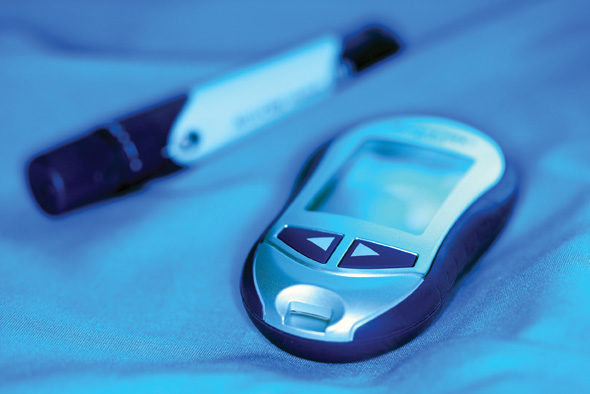During a recent presentation on the wave of diabetic trouble sweeping through our population, Martie Whittekin, CCN, consultant to Lily of the Desert, Denton, TX, cited a fearful statistic. By the end of the current decade, up to 50% of the United States population will be contending with diabetes of some form and severity (1).
When a health issue becomes that widespread, it is no longer a problem only affecting an unfortunate minority. Instead, it is a societal dilemma that we must all confront together. Though natural remedies for diabetes can't be said to treat the condition, there are some supplement options that may be beneficial.
Of particular concern is that obesity-related health conditions like abnormal glucose tolerance or type-2 diabetes, which primarily used to be seen in adults, are now a major factor for young populations. The problem, in large part, is the structure of our average diet. The American Diabetes Association recommends, for instance, that a human being consume around 22 pounds of sugar per year, according to Scott Steil, president of Nutra Bridge, Shoreview, MN. Steil also provides the figure that the average person in the United States consumes over 75 pounds of sugar annually. “The impact of this is directly linked to the epidemic of prediabetes, metabolic syndrome and diabetes that plagues our society,” he says.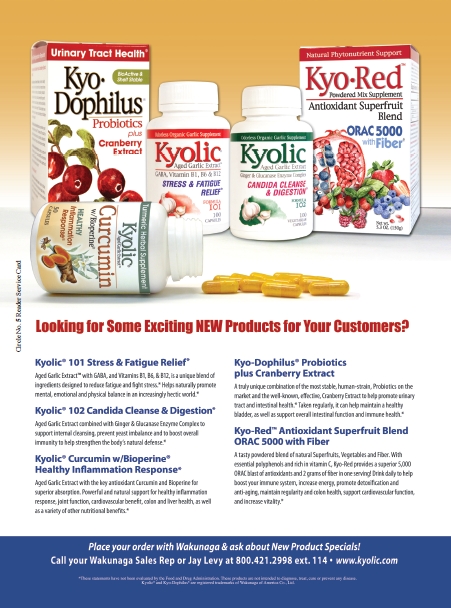
Along with diet, physical activity is the other cornerstone of prevention when it comes to diabetes. In order to slow and eventually reverse the incidence of the condition, people are going to have to start watching the type of carbohydrates they regularly consume (complex carbs are typically better than refined, as they cause glucose levels to rise more slowly). They are also going to have to start moving more, explains Steve Holtby, president and CEO of Soft Gel Technologies, Inc., Los Angeles, CA. “The best recommendation for people with pre-diabetes (and diabetes) is to exercise regularly, and eat a diet high in fiber with little or no saturated and trans fat,” he says.
There are, of course, fundamental nutritional issues which factor into diabetes, and this is where natural products can come into the picture. Some experts go so far as to say that these nutritional considerations deserve the most attention. Calling type-2 diabetes a primarily nutritional disease, Jack Challem, consultant and educator for Carlson Laboratories, Inc., Arlington Heights, IL and author of Stop Prediabetes Now, states, “It’s important to remember that type 2 diabetes is a very complex disorder with a variety of nutritional underpinnings, so it’s doubtful that most individual ingredients will, by themselves, have a significant or sustained benefit.”
Challem goes on to state his belief that the greatest effects can be derived from the synergy of various ingredients, along with proper diet and physical activity. There are a wealth of options available to help diabetic clients achieve that synergy, as well as a wealth of information with which they will need to arm themselves, if they are to win the diet and lifestyle battle. Their local natural products store can serve as a home base, at the ready with information and support in their bid to naturally alter the course of their condition.
 If a store can become a valuable source of information, clients will begin to think of it as an ally in their diabetes battle. “The most useful approach for a company to take would be to offer some comprehensive educational tools,” says Tori Hudson, N.D., advisory board member for Watsonville, CA-based Nordic Naturals. These tools can include exercise program advice, specific nutritional advice, weight loss/weight management plans, counseling on individual products for blood sugar control and more.
If a store can become a valuable source of information, clients will begin to think of it as an ally in their diabetes battle. “The most useful approach for a company to take would be to offer some comprehensive educational tools,” says Tori Hudson, N.D., advisory board member for Watsonville, CA-based Nordic Naturals. These tools can include exercise program advice, specific nutritional advice, weight loss/weight management plans, counseling on individual products for blood sugar control and more.
Perspectives on Diabetes
People have been attempting to control troublesome blood sugar levels via better nutrition for a long time. The list of potential approaches stretches out of sight, but not all natural diabetes care solutions have equal footing. “The ‘older’ ones usually have more scientific support than the ‘newer’ ones. Some ingredients, such as silymarin and chromium, really stand out and are supported by human studies,” Challem says. Those ingredients with less support, he adds, can still fill small niches in terms of their health applications, and specifically, they can contribute incremental benefits in blood sugar and insulin management.
Aid the ailment. Diabetes mellitus in all its forms is such a complicated condition, and results in such diverse and devastating effects on the body, that attempts to control it must cover a lot of ground. Natural supplements with established records in diabetes care often carry benefits for specific ailments, such as diabetic retinopathy, or damage to the eye’s retina. A pine bark extract supplement (Pycnogenol) was widely tested in the 1980s to see if it benefited retinopathic diabetics, according to Frank Schönlau, Ph.D., director of scientific communications for Horphag Research, global distributor of the ingredient and Natural Health Science, Hoboken, NJ, North American distributor.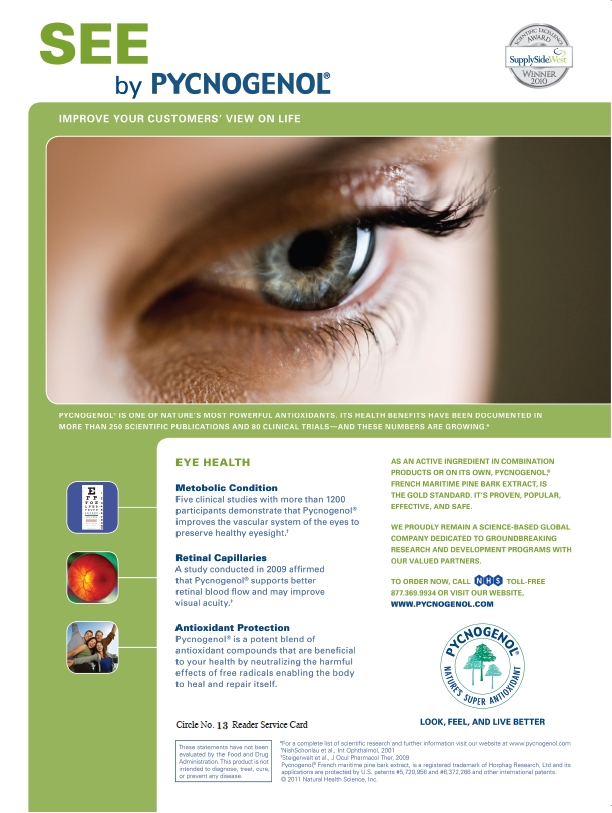
Those early field studies demonstrated that low doses of the extract served to stop micro-bleeding into the retina, which helped to preserve remaining vision. The ingredient also proved effective, according to Schönlau, in aiding the often difficult healing of diabetic ulcers. “These are common to the lower extremities of diabetic people and may deteriorate to an extent that amputations may be required,” Schönlau explains.
While many approaches to diabetes care focus on weight management and sugar metabolism, vice-president of research for Lily of the Desert Glenn Gillis, Ph.D., claims that protein metabolism is an important element that is often neglected. “As a diabetic cannot metabolize sugar properly, they must metabolize their own structural protein to feed certain important organs (brain, kidney, eyes) leading to an increase in toxic urea-based nitrates,” Gillis says, adding that a branded complex derived from Aloe vera (Aloesorb), has been clinically proven to reduce the levels of these toxic metabolites. Gillis says this approach will need a boost in consumer awareness, but that it may represent a new avenue toward reducing some symptoms of diabetes.
Diabetic neuropathy is the vascular damage sustained by nerve structures as a complication of diabetes, resulting in muscular weakness and other symptoms. It is another very common affliction, especially if the diabetes has been present over a long period. Holtby points to both alpha-lipoic acid (ALA) and gamma-linolenic acid (GLA) for their track records in reducing the seve rity of neuropathy. In fact, one research review of 15 clinical trials concluded that a regimen of 600 mg per day over three weeks is effective in reducing symptoms (2). Holtby says that these acids may strengthen nerve communication by improving the flow of blood to peripheral nerves, and by helping regenerate nerve fibers.
rity of neuropathy. In fact, one research review of 15 clinical trials concluded that a regimen of 600 mg per day over three weeks is effective in reducing symptoms (2). Holtby says that these acids may strengthen nerve communication by improving the flow of blood to peripheral nerves, and by helping regenerate nerve fibers.
After incorporating the necessary lifestyle changes, supplementation can often improve the outlook of many other health issues associated with diabetes. It is a matter of pairing the right nutrition with individual needs. Hudson lists a few more of these applications: reducing/preventing oxidative damage from high blood sugar levels, reducing cardiovascular disease risks associated with type 2 diabetes through improving cholesterol and triglyceride levels, optimizing blood pressure, reducing vascular inflammation, improving endothelial function and improving microcirculation.
Glucose management. Attempting to tame the three-headed monster of blood sugar level, insulin sensitivity and carbohydrate intake is the name of the game for all diabetes sufferers. The problem with the natural supplement field for these clients is not a lack of options, but where to start, and on these questions they should always consult their physicians.
Because natural remedies for diabetes have such a long history, there is the feeling that there is nothing new under the sun in this area. “The arsenal of diabetes/blood sugar regulating nutrients has been pretty well picked over,” says Dallas Clouatre, Ph.D., new product development and 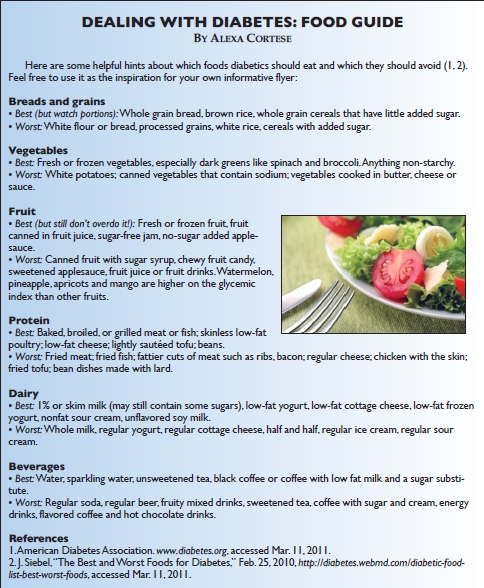 marketing consultant for Jarrow Formulas, Los Angeles, CA. But, one fairly new alternative in the blood sugar regulation arena that is worth recognizing is bitter melon, and specifically the wild genotype called Momordica charantia, Clouatre adds.
marketing consultant for Jarrow Formulas, Los Angeles, CA. But, one fairly new alternative in the blood sugar regulation arena that is worth recognizing is bitter melon, and specifically the wild genotype called Momordica charantia, Clouatre adds.
Earlier this decade, animal studies began to draw a connection between the mechanisms of action of bitter melon and metformin, a leading anti-diabetic drug. The established effects include reducing excessive glucose output from the liver and reducing serum insulin, Clouatre explains. He emphasizes that freshly produced extracts of bitter melon have performed the best in these trials, and that extracts of commercially cultivated bitter melon have fared less well. On the blood sugar front, a new study presents wild bitter melon as a rival to metformin in regulating blood glucose in diabetic animals (3).
There are many other options that may directly impact blood sugar levels for the better. Mitch Skop, senior director of new product development for Pharmachem Laboratories Inc., Kearny, NJ, hails a recently introduced combination of L-Arabinose with a patented chromium compound. It may slow the digestion of sugar for effective weight and blood sugar control, he says, when used in conjunction with a nutrient-dense, fiber-rich diet.
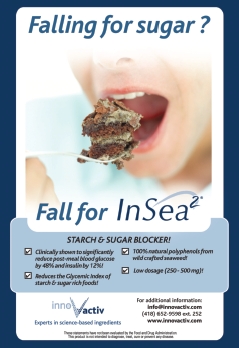 The leaves of Lagerstroemia speciosa L., commonly known as Banabá or Crepe myrtle, contain significant amounts of corosolic acid, which has a demonstrated ability to lower blood glucose levels, according to Holtby. He adds that corosolic acid also possesses tannins that serve to stimulate glucose transport into fat cells.
The leaves of Lagerstroemia speciosa L., commonly known as Banabá or Crepe myrtle, contain significant amounts of corosolic acid, which has a demonstrated ability to lower blood glucose levels, according to Holtby. He adds that corosolic acid also possesses tannins that serve to stimulate glucose transport into fat cells.
Olive leaf extract, in combination with cinnamon, has a proven ability to assist with blood sugar management in type 2 diabetes, says Herb Joiner-Bey, N.D., scientific advisor to Barlean’s, Ferndale, WA. “Modern research is demonstrating its value in diabetes mellitus of both types 1 and 2. Due to its benefits in reducing the phenomenon of autoimmunity, olive leaf may have a role to play in preventing or treating type 1 diabetes,” he adds.
Joiner-Bey also alludes to the Human Nutrition Division of the U.S. Department of Agriculture’s assessment, from the year 2000, that cinnamon may improve insulin receptor response. Furthering the acclaim for cinnamon as a diabetes supplement, Trisha Sugarek, national educator/R&D specialist for Bluebonnet Nutrition Corporation, Sugar Land, TX, places it among a select group of well-studied botanicals that stand apart from the crowd. As well as cinnamon, she cites the already-detailed bitter melon, Asian and American ginseng and fenugreek for their diabetes management profiles. “Cinnamon in particular may significantly help people with type 2 diabetes improve their ability to respond to insulin, thus normalizing their blood sugar levels,” she says.
According to Sugarek, test tube and animal studies have found that cinnamon not only stimulates insulin receptors, but inhibits an enzyme that inactivates those receptors. The effective active markers for controlling blood sugar in a cinnamon extract, she adds, are 1% trimeric and tetrameric polyphenol type-A polymers. A brand new meta-analysis of clinical and animal studies found that cinnamon intake consistently yields a statistically significant lowering of fasting blood glucose levels (4).
|
Furry Friends Household pets are more a part of the family than ever, and they, too, are susceptible to diabetes. Older cats, especially, tend to wind up suffering from the condition. According to Jean Hofve, DVM, veterinary advisor to Nordic Naturals, Watsonville, CA, diabetes in dogs is usually of the type 1 variety, meaning it is caused by genetics, or occasionally by pancreatitis. Cats are more subject to type 2, which they can develop as a result from obesity and a high carbohydrate diet. Insulin is sometimes used as a treatment for diabetic cats, along with a switch from a high-carb dry food to a high-protein wet food diet (sometimes referred to as the “Catkins diet”, a play on the popular low-carb Atkins diet for humans, Hofve says). The value of catering to pet owners in the diabetes category depends largely on how often the issue comes up, says Paul Dijkstra, CEO of InterHealth Nutraceuticals, Benicia, CA. When the issue does arise, they may very well want to do all they can for their pet. Science suggests that chromium may be helpful for improving sensitivity in an overweight pet, Dijkstra says. Hofve adds that herbs such as fenugreek, like they can be for humans, may be helpful to a diabetic pet, but that a vet should always be consulted due to the differences in an animal’s metabolism. “Omega-3 fatty acids are beneficial for diabetes mellitus in both dogs and cats. However, pets are unable to synthesize enough of the needed omega-3s, EPA and DHA, from plant-based oils; so fish body oil and cod liver oil are the best sources,” Hofve says. Omega-3s from these sources can support proper fat and glucose metabolism, immune system function, reduced inflammation and weight management in an animal. |
As has been noted already, chromium picolinate (the form used in supplements) is a major player in this category with proven benefits. “Vast research on chromium in general has demonstrated its benefits for increasing lean body mass and modulating lipid levels,” says Paul Dijkstra, CEO of InterHealth Nutraceuticals, Benicia, CA.
A patent-pending ingredient (Zychrome from InterHealth), consisting of chromium, niacin and L-cysteine has preclinical research demonstrating improved glucose control and insulin regulation. This is perhaps explained by another finding, of decreased markers of inflammation and oxidative stress, says Dijkstra. He states, “Certain inflammatory markers such as TNF-a and MCP-1 play a role in insulin resistance by exerting direct inhibitor effects on insulin signaling and reducing glucose uptake in cells.”
A component of the Maitake mushroom has been well-studied for its potential benefits to insulin regulation. “The SX-Fraction is a glyco-protein that is unique to the Maitake mushroom, that has been successfully studied in several laboratory and clinical trials,” says Mark Kaylor, vice-president of education and research for Mushroom Wisdom Inc., East Rutherford, NJ. Kaylor emphasizes the supplement’s long-term ability to lower blood sugar and insulin levels in step with each other. “Utilizing substances that lower both is key, because lowering blood sugar levels by increasing insulin levels may in the long run contribute to the diabetic condition by increasing insulin resistance,” he says.
Manipulating the way carbohydrates are absorbed by the body is a common tactic seen in many supplement formulations, and it is an approach that continues to be backed by research.
Delays in the absorption of dietary carbohydrates can be achieved with Pycnogenol, according to Schönlau, resulting in lower blood glucose after meals and extending the feeling of satiety. Diabetes Care, a journal of the American Diabetes Association, published a study on the glucose-lowering effect of the ingredient (5). “In the end, type-2 diabetes is a nutritional disorder,” Schönlau says, adding that interventions like this can alter the negative effects of caloric intake for diabetics.
Steil points out that it is nearly impossible to entirely avoid starches and refined carbohydrates with today’s dietary options. So, he says the ability of a new ingredient (InSea2) to block the breakdown of both starch and table sugar at once is important. By inhibiting the alpha-amylase and alpha-glucosidase enzymes, Steil says the ingredient has been shown to significantly reduce peak insulin levels, by 22%, and overall insulin levels by 12%. It also increases insulin sensitivity by 8% when compared with placebo.
Fiber matrixes and other supplements affecting the glycemic impact of meals can have the added benefit of weight loss for diabetics. Since obesity is the most reliable precursor of diabetes, and an important element in reversing diabetes is shedding excess weight, these options can prove doubly effective.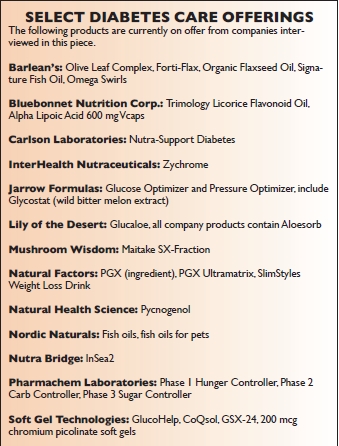
The role of a lack of fiber in degenerative health conditions shouldn’t be underestimated, suggests Joiner-Bey, who explains that dietary deficiency in soluble and insoluble fiber is a major factor leading to the onset of type-2 diabetes. “Remarkably, it appears that insoluble fiber has a greater impact on preventing type-2 diabetes than soluble,” he says. Milled flaxseed is a prime source of soluble fiber and insoluble fiber, Joiner-Bey says. The soluble mucilages in flaxseed slow sugar metabolism, and slow the digestion of starch into sugar as well.
Skop describes the ability, shown in clinical studies, of a white bean extract to reduce the glycemic index (GI, a concept which we will delve into next) of foods like white bread, and to reduce the digestion of starches. This also occurs via the inhibition of the digestive enzyme alpha-amylase.
Compounds derived from Aloe vera, Gillis says, are being found to promote weight loss and help with glucose management at the same time. By reducing the glycemic load (GL, a rival concept which we’ll also explore) of a meal, blood sugar spikes are held in check. Gillis said the compound, when taken before each meal, resulted in significant weight loss over a three-month clinical trial, adding, “Interestingly, testing proved that the weight loss came virtually all from fat stores (>95%) and not from structural protein or water loss.”
Michael Murray, N.D., director of product development for Natural Factors, Everett, WA, describes a branded fiber matrix (PGX) that was initially researched at the University of Toronto by the same team that developed the GI. When taken in conjunction with food, Murray says, the compound can reduce the GI of that food by 35–70%. It has also been shown to stabilize blood sugar, increase insulin sensitivity, reduce appetite, promote weight loss and lower cholesterol and triglycerides. Murray notes that dosages of supplements like these should be adjusted in accordance with the size of the individual appetite.
Indeed, how to approach mealtime is a daily worry for diabetics, and can often become an exhausting battle with their own willpower. Next, we’ll attempt to understand the relative importance, to a diabetic, of the type of food ingested versus how much is actually consumed.
A Heavy Load
The term “glycemic index” is so ever-present in the world of many diabetics that it becomes a mantra. They must be intensely concerned with it, or at least with the concept behind it, in order to safely navigate their eating choices and schedules. In terms of marketing and product labeling, GI has been the dominant force in shaping the food purchasing habits of diabetics. This measure of the rate at which the carbohydrates in a given food will be broken down and absorbed has many caveats, however.
For one, Holtby cites the Mayo Clinic’s opinion that the low GI diet may be too complicated for the average consumer. “This is because the glycemic index of foods can swing widely depending upon how the food is prepared and what other foods are eaten at the same time,” he says. Furthermore, adherence to such a diet might give the idea that all low GI foods are good for you. “For instance, many candy bars and sweets have a low to moderate GI. However, these foods are also high in calories and low in nutrients and should be eaten with your overall nutrition goals in mind,” says Sugarek.
GL is a newer concept that is gaining ground in the minds of consumers and researchers, though it is really an extension of the GI measurement. GL factors in the portion size in which a given food is typically consumed, as well as its GI rating. Sugarek points out that this results in examples like the carrot, the carbohydrates in which are broken down easily, thus lending it a high GI. But the raw amount of carbohydrates in carrots pales to that of other foods like potatoes and bread, so the GL of carrots is relatively low, meaning it will not typically result in a blood sugar spike unless consumed in large, unrealistic quantities.
At the current time, consumers are usually left in the dark as to the GI/GL distinction, which puts pressure on manufacturers, according to Whittekin, to only market foods as “low glycemic” if they are equally low in GL. She cites pasta as a good example of a food that may not rate at the top of the GI chart, but can be troublesome to diabetics when piled as high onto the dinner plate as it oftentimes is.
Clouatre describes an interesting recent study, which directly compared the ability of GL with that of carbohydrate quantities alone to predict postprandial (after a meal) insulin and glucose responses. The study found GL to accurately account for 58% of the postprandial glucose responses, and 46% of the insulin responses when testing diverse meals; the result was 85% and 58% for glucose and insulin respectively when testing single foods. (6). “In the research world, GL will continue to gain traction as a tool. It remains to be seen whether this will translate into major changes in product formulation,” Clouatre says.
Blood sugar, explains Joiner-Bey, is a source of energy to brain cells, fuel for exercise, storage for muscle glycogen, and building material for connective tissue. Chronically over-saturating the body with glucose can lead to pathological, undesirable results, like storage of sugar as body fat and in the urine (a famous marker of diabetes). So, he says of the GL measure, “Quantifying the sugar burden on the body is a very useful concept, especially when it comes to seeing which of our favorite foods has the most insidious health impact.”
Kaylor thinks the traction GL is gaining is a sign of progress, stating, “The utilization of glycemic load over the previously popular glycemic index is evidence that science and medicine are beginning to look at treatments for diabetes that are more relevant to the real world and not the laboratory.”
But Steil does not think that GI’s time is up yet. “In fact, consumer awareness toward the concept of glycemic index has grown nicely with the publication of a number of positive clinical trials showing the benefits of eating slowly-digestible carbohydrates, such as those contained in whole grains or legumes,” he says, adding that his company’s focus remains with GI, as they believe the concept is better understood and embraced by consumers.
Whatever lead diabetics follow for their dietary choices, they along with their health care practitioners, and product marketers, too, should beware number fatigue. “Consumers quickly get tired of counting things—calories, carbs, glycemic index or load numbers—and their motivation to follow a diet quickly wanes as a result,” says Challem. He suggests in his book on the subject that individuals focus on two main “food groups”, namely quality proteins and veggies, to help simplify matters. Gaining a general knowledge—a sort of mental GL or GI chart—of which favorite foods won’t swing blood sugar out of control may be most ideal.
The end goal for diabetics, of course, is not merely to control wild blood sugar fluctuations, but to return things to normal. “While a low glycemic load diet is very important in reducing blood sugar levels, it has little effect in eliminating blood sugar volatility,” says Murray. He heralds the use of the new continuous glucose monitoring system (CGMS) to achieve more detailed readings than typical, periodic glucose checks.
Getting on top of what’s going on inside may help some reverse the process leading to insulin resistance, and glucose is the pivot point in that process. “Although the control of appetite is influenced by a whole orchestra of hormones, peptides, and neurotransmitters, glucose can still be considered as a lead player and perhaps the conductor of this orchestra,” Murray says.
The basic dietary wisdom necessary for blood sugar management cannot be ignored, explains Skop, even if diabetics are using supplements for the same purpose. “Eating foods high in whole grains and fiber, and devoid of confections and bleached/processed flour/rice, will create a consistently lower glycemic load in the bloodstream,” he says. Natural remedies for diabetes can work in conjunction with diet to help those dealing with the condition. WF
References
1. M. Whittekin (2011). Your Store & the Diabetes Epidemic-A Better Approach: Presented by Lily of the Desert. Natural Products Expo West, educational session.
2. D. Ziegler, et al., “Alpha-lipoic acid in the treatment of diabetic polyneuropathy in Germany: current evidence from clinical trials,” Exp. Clin. Endocrinol. Diabetes. 107(7), 421-30 (1999).
3. D. Clouatre, et al., “Bitter Melon Extracts in Diabetic and Normal Rats Favorably Influence Blood Glucose and Blood Pressure Regulation,” J. Medicinal Food, forthcoming (2011).
4. P.A. Davis, Yokoyama, W., “Cinnamon Intake Lowers Fasting Blood Glucose: Meta-Analysis,” J. Med Food. Apr 11. [Epub ahead of print] (2011).
5. X. Liu, et al., “French Maritime Pine Bark Extract Pycnogenol Dose-Dependently Lowers Glucose in Type 2 Diabetic Patients,” Diabetes Care 27(3), 839 (2004).
6. J. Bao, et al., “Prediction of postprandial glycemia and insulinemia in lean, young, healthy adults: glycemic load compared with carbohydrate content alone,” Am J Clin Nutr. Feb 25. [Epub ahead of print] (2011).
Published in WholeFoods Magazine, June 2011

